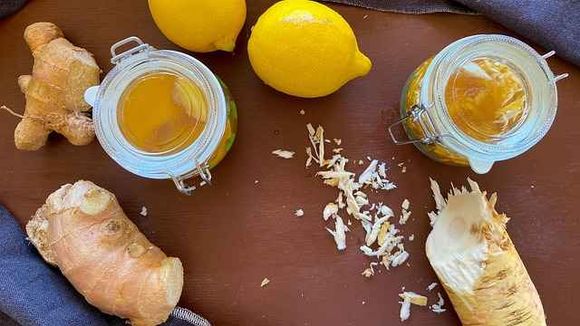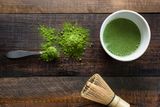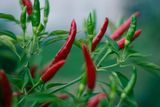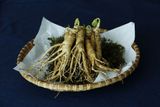The most important thing about horseradish
Horseradish (Armoracia lapathifolia Gilib.) is a member of the Brassicaceae family and has been used as a spice since ancient times. The plant originates from Southeastern Europe and is widely grown in Europe, America and some mountain regions of India. 1
It is most widely used as a spice, both alone and as an ingredient in sauces and dressings. Ready-made horseradish is easily available at the grocery store, but you can make it yourself. You just need to follow certain steps so that you do not have to suddenly run away from the kitchen because of the sharp smell.
Prepared horseradish is a spice made from the large white root of the horseradish plant, which is of the same family as mustard and wasabi. The leaves are also edible, and the root is harvested to be used as in cooking. It can be replanted for harvest next year. The grated root can be used fresh, or it can be dried or ground into powder.
You'll often find horseradish added to spices like mustard or mayonnaise to give them extra flavor. And horseradish sauce can be just grated horseradish in vinegar or it can be a creamy version. Either way, the taste can not be mistaken: the volatile mustard oil in horseradish causes tears in the eyes and heat on the tongue. Isothiocyanate is the compound that gives off heat when exposed by eating or crushing horseradish. Vinegar neutralizes the reaction and stabilizes the taste. It should be added immediately to fresh grated horseradish to get a softer taste if you prepare it at home.
The finished horseradish is made with grated horseradish root, vinegar and salt. Prepared horseradish is not exactly the same as horseradish sauce, but it is an ingredient in it. Horseradish sauce combines ready-made horseradish with cream, sour cream or mayonnaise, making it softer and creamier.
Benefits of horseradish for health
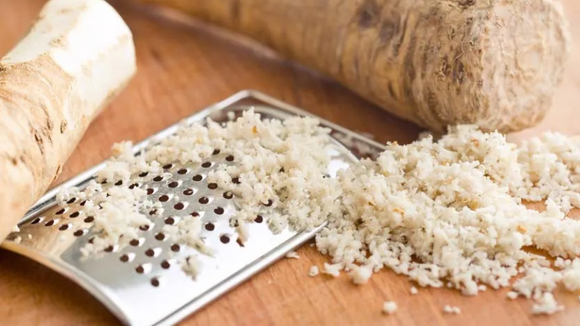
Rich in nutrients
Horseradish roots contain nutrients with which few cultivated plants and certainly no other root crop can compare.
Freshly grated root contains more vitamin C than most common fruits, including oranges. The root is rich in calcium, iron, thiamine, potassium, magnesium, trace elements and proteins, but is low in phosphorus and sodium. Horseradish is 20 times richer in calcium than potatoes (with peel) and contains nearly four times more vitamin C and three times more iron.
Natural antibacterial agent
Studies have shown that horseradish has an antibacterial component called allyl isothiocyanate. In recent studies, it has been shown that this kills harmful bacteria and microbes that lead to infections. 2 There are suggestions about the anti-cancer action of this component, but there are still difficulties in terms of proving its effectiveness.
In addition, horseradish may be useful for treating urinary tract infections. This is because it has both antibacterial and diuretic properties. 3
Increases circulation and helps clear mucus

If you feel a cold or sinusitis, horseradish may be your best friend. Its high levels of sulfur have been shown to help clear the sinuses and mucus. In addition, the biologically active compounds in horseradish can support facial circulation and promote drainage.
Acceleration of metabolism
Another great health benefit of horseradish is that the natural chemicals isothiocyanates help with weight loss, naturally speeding up metabolism. 4
Helps for good digestion
Along with the taste, which is distinctive, horseradish promotes healthy digestion. For example, it supports liver function. Horseradish is part of a group called cholagogues because it triggers the gallbladder to release bile - a key aspect of the digestive process.
Anti-cancer properties of horseradish
Studies published in the medical journal Molecules since 2016, as well as research in the Journal of Agricultural and Food Industry, found encouraging results on horseradish and cancer.
There are bioactive compounds, including one called sinigrin, which can help your body fight cancer. For example, studies have shown that it helps slow the spread of cancer cells, especially in the liver. More research is needed to confirm the findings, but it is positive to note that further studies are ongoing in this regard. 5
Recipes with horseradish
Homemade horseradish
This recipe uses a small root to prepare 1/2 cup of ready-made horseradish. Due to the small amount, it is best to use a small food processor or chopper. Double the recipe for a large food processor by making 1 cup.
Before you start, it's important to warn you to be careful. Crushed fresh horseradish is many times stronger than freshly chopped onions and can really hurt your eyes if you get too close. Keep at least at your fingertips and work in a well-ventilated room.
Ingredients:
- 1 piece of horseradish root
- 2 tablespoons water, more if necessary
- 1 tablespoon white vinegar, more if necessary
- Pinch of salt
Preparation steps:
- Dig or buy 2-25 cm. horseradish root:
- If you have access to the garden plant, use a sturdy shovel to dig up a horseradish tuber of this length.
- Remove the leaves (if necessary) and rinse the dirt from the root.
- Use a vegetable peeler to peel the surface skin of the tuber. Cut into pieces.
- Place in a small food processor. Add a few tablespoons of water. Process until well digested, adding more water over a teaspoon if necessary.
- Strain some of the water if the mixture is too liquid. Add a tablespoon of white vinegar and a pinch of salt to the mixture. Run the blender again to mix the ingredients.
- Keep in mind that vinegar will stabilize the level of hotness of ground horseradish, so do not wait too long to add it to the mixture. Add more vinegar, 1 teaspoon at a time, if necessary.
- Try to taste and when you are ready, carefully transfer the grated horseradish to a jar with a rubber spatula. You can store it for at least 1 month in the refrigerator.
Preparation of horseradish for use as a spice
Peel the root and grate it finely or cut it into cubes and place the horseradish cubes in a blender. Add one or two ice cubes and grind the horseradish until smooth. (Make sure you do this in a well-ventilated room and use eye and nose protection. The smell can be quite sharp.)
For a softer taste, add immediately 1 to 2 tablespoons of white vinegar and a few pinches of salt. For hot and spicy horseradish, wait 3 minutes before adding 1 to 2 tablespoons of white vinegar and a few pinches of salt.
Recipe for mayo with horseradish
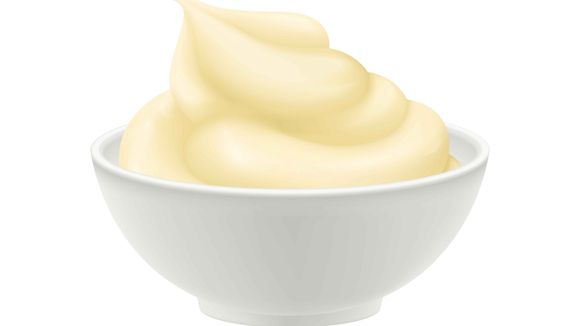
Homemade mayonnaise may sound like something impossible, but we have a great recipe for this rich and adaptable ingredient in the kitchen at your fingertips. Mayonnaise, from spicy to sweet, is suitable for almost everything from sandwiches, to salads, vegetables and meats. Horseradish in the recipe adds us a spicy note that combines perfectly with roast beef or smoked fish, for example. You can also use horseradish mayonnaise in devil's eggs or as a dip for french fries.
Ingredients:
- 1 large yolk (at room temperature)
- 2 tablespoons fresh lemon juice
- 1 teaspoon white wine vinegar
- 1 teaspoon Dijon mustard
- 1/2 teaspoon salt
- 3/4 cup rapeseed (or vegetable oil)
- 1 to 2 tablespoons of ready-made horseradish (adjust to taste)
- Optional: 2 tablespoons parsley, dill or chives (finely chopped)
Preparation steps:
- Beat the egg yolk, 1 teaspoon of lemon juice, vinegar, mustard and salt in a large bowl until well mixed and slightly thickened.
- Top up oil 1/4 teaspoon at a time, stirring vigorously between each addition until the mayonnaise begins to thicken and become homogeneous. Add the remaining oil in a constant but thin stream, stirring constantly. You can stop before using all the oil if the mayonnaise reaches the consistency you want.
- Measure 1/2 cup mayonnaise in a clean bowl. Add horseradish, the remaining 1 teaspoon of lemon juice and herbs if you use, and mix gently to mix well.
If the mayonnaise fails to get into the right consistency, beat a new yolk in a clean bowl until thickened, then add the first mayonnaise drop by drop, beating vigorously until homogenized.
You can prepare the mayonnaise in a blender or food processor. Pulse the ingredients from step 1 to combine them, then slowly pour the oil when the engine is running. Add horseradish and herbs, if you're using, for the last 20 seconds.
